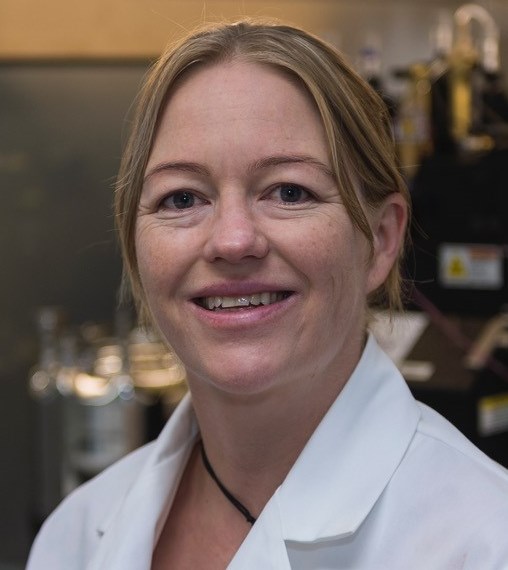
Proliferation Monitoring by Flow Cytometry, Lesson 2: Monitoring Cell Cycle Progression (includes 4 modules)
-
Register
- Visitor - $70
- Bronze - Free!
- Silver - Free!
- Gold - Free!
- Platinum - Free!
- Community Administrator - Free!
- ISAC Staff - Free!
- Bronze Lab Membership - Free!
- Silver Lab Membership - Free!
- Platinum Lab Membership - Free!
Package of Proliferation Monitoring by Flow Cytometry Lesson 2: Monitoring Cell Cycle Progression
Lesson 2: Monitoring Cell Cycle Progression discusses methods for assessing S-phase fraction and cell cycle kinetics using DNA content alone or in combination with phase-specific probes, with guidance on analysis strategies, pitfalls, and clinical applications
Includes:
Lesson 2A: Principles and Methods
Lesson 2B: Data Analysis Strategies
Lesson 2C: Practical Considerations & Troubleshooting
Lesson 2D: Applications
Advanced Search This List
-
Contains 3 Component(s), Includes Credits
Online, self-paced course presented by Kylie Price, Katherine A. (Kathy) Muirhead, and Paul K. Wallace
Keywords: DNA-binding dyes, thymidine analogs, cell cycle, DAPI, PI, BrdU, IdU, EdU, Ki-67, PCNA, phosphorylated histone 3, FUCCI
This is the first of four modules of Lesson 2 of the Proliferation course. Module 2A focuses on the principles and methods for the use of DNA binding dyes alone or in combination with thymidine analogs, proliferation related antigens, and/or phase specific expression vectors, to assess:
- How cells within a population of interest are distributed among the different cell cycle phases
- The kinetics with which cells of interest are progressing through the cell cycle
Anyone with a basic understanding of flow cytometry who is unfamiliar with (or wish to review) how flow cytometry is used to monitor the distribution or progression of cells through the cell cycle is encouraged to attend.
Lesson 1: Basics of the Cell Cycle is currently available here.
Lesson 2B: DNA Cell Cycle Data Analysis Strategies is currently available here.
Lesson 2C: Practical Considerations & Troubleshooting is currently available here.
Authors

Kylie M. Price
Hugh Green Cytometry Core Facility
Malaghan Institute of Medical Research
Wellington, New Zealand

Katharine A. (Kathy) Muirhead
SciGro Inc., Midwest Office
Middleton, Wisconsin, USA

Paul K. Wallace
Department of Flow and Image Cytometry,
Roswell Park Cancer Institute
Buffalo, New York, USA
CMLE Credit: 1.0
-
Contains 4 Component(s), Includes Credits
Online, self-paced course presented by Kylie Price, Kathy Muirhead, and Paul Wallace
This is the second of four modules of Lesson 2 of the Proliferation course. Module 2B provides an in depth discussion of DNA cell cycle data analysis strategies. The underlying concepts behind the characteristic cell cycle distribution are described followed by a description with examples of simple and complex approaches to modeling normal and abnormal DNA fluorescence data.
The course concludes with a discussion of controls to include in proper experimental design and explains how to analyze synchronized cell populations as seen when cell cultures are drug treated. Anyone with a basic understanding of flow cytometry who is unfamiliar with (or wishes to review) how DNA flow cytometric data is analyzed is encouraged to attend.
Authors

Kylie M. Price
Hugh Green Cytometry Core Facility
Malaghan Institute of Medical Research
Wellington, New Zealand

Katharine A. (Kathy) Muirhead
SciGro, Inc., Midwest Office
Middleton, Wisconsin, USA

Paul K. Wallace
Department of Flow and Image Cytometry
Roswell Park Cancer Institute
Buffalo, New York, USA
CMLE Credit: 1.0
-
Contains 4 Component(s), Includes Credits
Online, self-paced course presented by Kylie Price, Kathy Muirhead, and Paul Wallace
This is the third of four modules in Lesson 2 of the proliferation course, which focuses on cell cycle analysis by flow cytometry. Module 2C: “Practical Considerations and Troubleshooting" examines how choices made during sample preparation, reagent selection, instrument setup, and data collection impact the reliability and quality of the resulting DNA histograms. Topics covered include instrument linearity, fixation effects, doublet discrimination techniques, and special considerations for DNA cell cycle analysis using vital DNA dyes and thymidine analogs.
Authors

Kylie M. Price
Hugh Green Cytometry Core Facility
Malaghan Institute of Medical Research
Wellington, New Zealand

Katharine A. (Kathy) Muirhead
SciGro Inc., Midwest Office
Middleton, Wisconsin, USA

Paul K. Wallace
Department of Flow and Image Cytometry
Roswell Park Cancer Institute
Buffalo, New York, USA
CMLE Credit: 1.0
-
Contains 4 Component(s), Includes Credits
Online, self-paced course presented by Kylie Price, Kathy Muirhead, and Paul Wallace
This is the final module in Lesson 2 of the proliferation course, which focuses on cell cycle analysis by flow cytometry. Module 2D “Applications" looks at how investigators have used the principles and methods discussed in Lessons 2A–2C to monitor cell cycle status and cell cycle progression in their research fields of interest. Topics covered include tumor diagnosis and prognosis, anti-tumor mechanisms of therapeutic agents, and regulation of growth versus quiescence or senescence in normal and neoplastic cells.
Authors

Kylie M. Price
Hugh Green Cytometry Core Facility
Malaghan Institute of Medical Research
Wellington, New Zealand

Katharine A. (Kathy) Muirhead
SciGro Inc., Midwest Office
Middleton, Wisconsin, USA

Paul K. Wallace
Department of Flow and Image Cytometry
Roswell Park Cancer Institute
Buffalo, New York, USA
CMLE Credit: 1.0
-
Contains 3 Component(s), Includes Credits
Online, self-paced course presented by Kylie Price, Katherine A. (Kathy) Muirhead, and Paul K. Wallace Keywords: DNA-binding dyes, thymidine analogs, cell cycle, DAPI, PI, BrdU, IdU, EdU, Ki-67, PCNA, phosphorylated histone 3, FUCCI
This is the first of four modules of Lesson 2 of the Proliferation course. Module 2A focuses on the principles and methods for the use of DNA binding dyes alone or in combination with thymidine analogs, proliferation related antigens, and/or phase specific expression vectors, to assess:
- How cells within a population of interest are distributed among the different cell cycle phases
- The kinetics with which cells of interest are progressing through the cell cycle
Anyone with a basic understanding of flow cytometry who is unfamiliar with (or wish to review) how flow cytometry is used to monitor the distribution or progression of cells through the cell cycle is encouraged to attend.
Lesson 1: Basics of the Cell Cycle is currently available here.
Lesson 2B: DNA Cell Cycle Data Analysis Strategies is currently available here.
Lesson 2C: Practical Considerations & Troubleshooting is currently available here.
Authors

Kylie M. Price
Hugh Green Cytometry Core Facility
Malaghan Institute of Medical Research
Wellington, New Zealand
Katharine A. (Kathy) Muirhead
SciGro Inc., Midwest Office
Middleton, Wisconsin, USA
Paul K. Wallace
Department of Flow and Image Cytometry,
Roswell Park Cancer Institute
Buffalo, New York, USACMLE Credit: 1.0
-
Contains 4 Component(s), Includes Credits
Online, self-paced course presented by Kylie Price, Kathy Muirhead, and Paul Wallace
This is the second of four modules of Lesson 2 of the Proliferation course. Module 2B provides an in depth discussion of DNA cell cycle data analysis strategies. The underlying concepts behind the characteristic cell cycle distribution are described followed by a description with examples of simple and complex approaches to modeling normal and abnormal DNA fluorescence data.
The course concludes with a discussion of controls to include in proper experimental design and explains how to analyze synchronized cell populations as seen when cell cultures are drug treated. Anyone with a basic understanding of flow cytometry who is unfamiliar with (or wishes to review) how DNA flow cytometric data is analyzed is encouraged to attend.
Authors

Kylie M. Price
Hugh Green Cytometry Core Facility
Malaghan Institute of Medical Research
Wellington, New Zealand
Katharine A. (Kathy) Muirhead
SciGro, Inc., Midwest Office
Middleton, Wisconsin, USA
Paul K. Wallace
Department of Flow and Image Cytometry
Roswell Park Cancer Institute
Buffalo, New York, USACMLE Credit: 1.0
-
Contains 4 Component(s), Includes Credits
Online, self-paced course presented by Kylie Price, Kathy Muirhead, and Paul Wallace
This is the third of four modules in Lesson 2 of the proliferation course, which focuses on cell cycle analysis by flow cytometry. Module 2C: “Practical Considerations and Troubleshooting" examines how choices made during sample preparation, reagent selection, instrument setup, and data collection impact the reliability and quality of the resulting DNA histograms. Topics covered include instrument linearity, fixation effects, doublet discrimination techniques, and special considerations for DNA cell cycle analysis using vital DNA dyes and thymidine analogs.
Authors

Kylie M. Price
Hugh Green Cytometry Core Facility
Malaghan Institute of Medical Research
Wellington, New Zealand
Katharine A. (Kathy) Muirhead
SciGro Inc., Midwest Office
Middleton, Wisconsin, USA
Paul K. Wallace
Department of Flow and Image Cytometry
Roswell Park Cancer Institute
Buffalo, New York, USACMLE Credit: 1.0
-
Contains 4 Component(s), Includes Credits
Online, self-paced course presented by Kylie Price, Kathy Muirhead, and Paul Wallace
This is the final module in Lesson 2 of the proliferation course, which focuses on cell cycle analysis by flow cytometry. Module 2D “Applications" looks at how investigators have used the principles and methods discussed in Lessons 2A–2C to monitor cell cycle status and cell cycle progression in their research fields of interest. Topics covered include tumor diagnosis and prognosis, anti-tumor mechanisms of therapeutic agents, and regulation of growth versus quiescence or senescence in normal and neoplastic cells.
Authors

Kylie M. Price
Hugh Green Cytometry Core Facility
Malaghan Institute of Medical Research
Wellington, New Zealand
Katharine A. (Kathy) Muirhead
SciGro Inc., Midwest Office
Middleton, Wisconsin, USA
Paul K. Wallace
Department of Flow and Image Cytometry
Roswell Park Cancer Institute
Buffalo, New York, USACMLE Credit: 1.0

